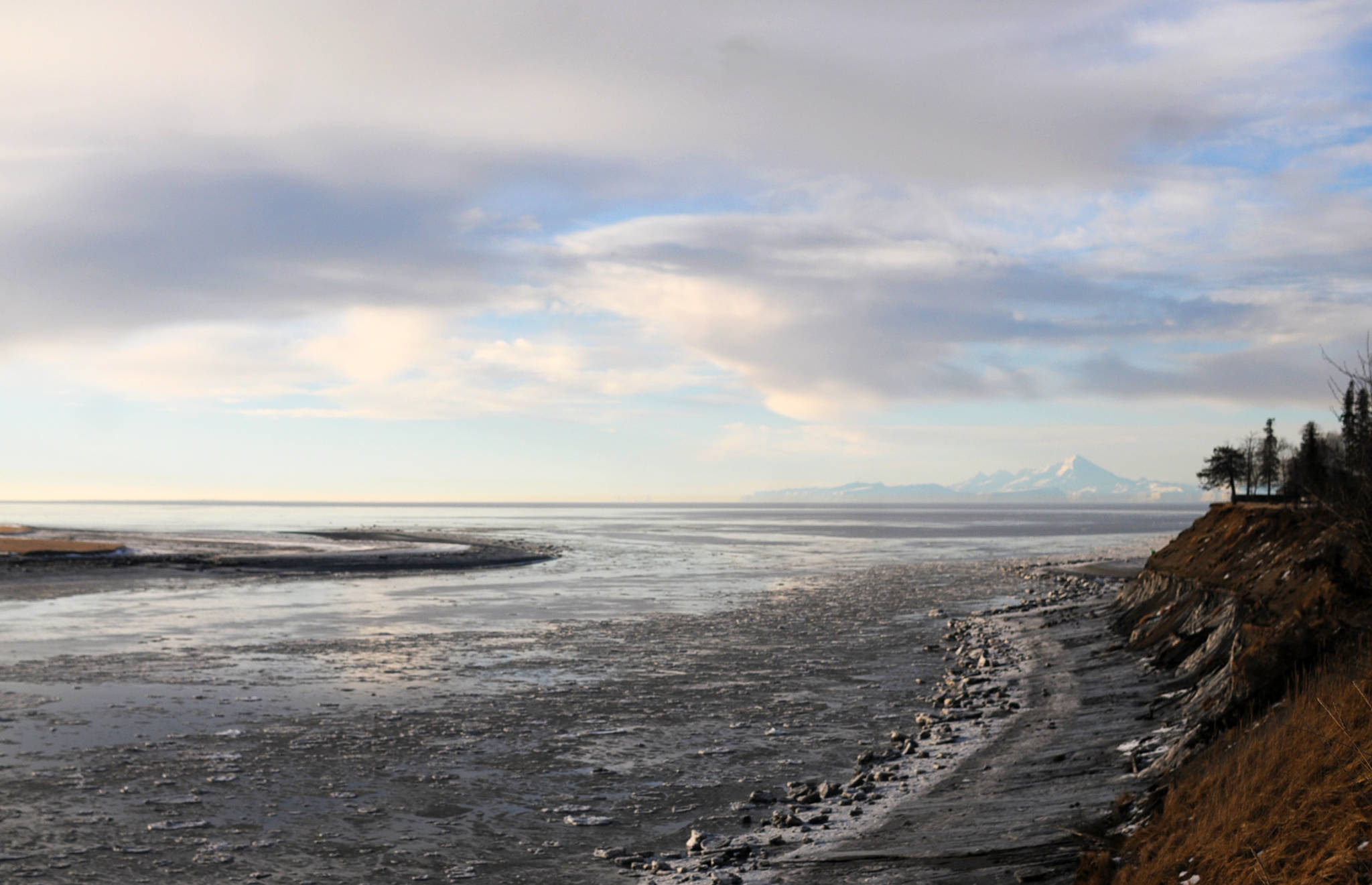Most of Alaska had a warmer, wetter winter than usual, and a warmer, drier summer may be on its way.
The National Oceanic and Atmospheric Administration’s quarterly climate review for December 2017–February 2018 shows temperatures trending above average across Alaska. Total precipitation across the region was up as well — a trend residents of Thompson Pass near Valdez got to know well when nearly 40 inches of snow fell in 12 hours on Dec. 6. That trend held true across Alaska with the exception of the northern part of the panhandle, the Kodiak Archipelago and the western Alaska Peninsula and the Aleutian Islands.
This winter also saw record low sea ice in the Chukchi and Bering seas. New Year’s arrived before ice extent reached 95 percent of the Chukchi Sea basin, more than a month later than the average before the 1990s, according to the NOAA review.
“A series of storms in the middle of February caused the loss of more than half of what ice had (formed),” the review states. “The was also very little shorefast ice along the Alaska coast, resulting in highly variable ice conditions, producing remarkable scenes of waves breaking on the breach at Utqiagvik on winter solstice and a virtual ice free ocean view of the Siberian coastline from Gambell.”
The lack of sea ice this year has impeded subsistence hunting for walrus and seal hunting in the northern Bering Sea, according to NOAA. Arctic sea ice hit its likely maximum on March 17, the second lowest in 39 years and slightly below 2017’s maximum, according to the National Snow and Ice Data Center. It’s significantly less than the historical average extent, on track with the trend of sea ice not reaching the historical average since 2001, according to a March 23 summary from the center.
Temperatures swelled to near freezing over the North Pole in late February after a storm in the North Atlantic sent mild air north, according to the NOAA review.
The impact on one region of Alaska won’t look the same as another region, said Rick Thoman, the National Weather Service Climate Sciences and Services Manager in Alaska.
“Things are changing in Alaska,” he said. “On the Kenai Peninsula, the winters are changing, perhaps less so than western Alaska or northern Alaska, where the changes are much greater.”
The western Kenai Peninsula saw warm flushes of air arriving in mid-December and January, reaching the upper 30s and melting off snow accumulation. However, temperatures dropped again and a fresh blanket of snow arrived in February, accumulating through the second week of March.
He noted that individuals’ experience with the weather may not directly reconcile with the overall climate data — it may go three weeks without snowing, while in past winters it has snowed nearly every day, but the overall records show more precipitation. Climatologists measure an average from 1981–2010 as a baseline.
Alaska is also a huge region, so broad climatological trends may not necessarily describe an individual region’s experience with the winter, Thoman said.
“Alaska’s a big place, with widely varying climates,” he said. “When we talk about Alaska, that is very much an abstract entity. So it was … the 10th warmest winter in Alaska — what does that mean, given that Alaska is such a big place? In most places you want to narrow that down.”
NOAA is also forecasting the next three months from April through June 2018 to be warmer and drier than average in parts of Alaska, including the Kenai Peninsula. Those predictions are based on dynamic modeling that take current conditions and model how a variety of factors are likely to shape weather in the future, Thoman said. Southern Southeast Alaska is forecast to be colder and wetter during the same period, according to the forecast.

